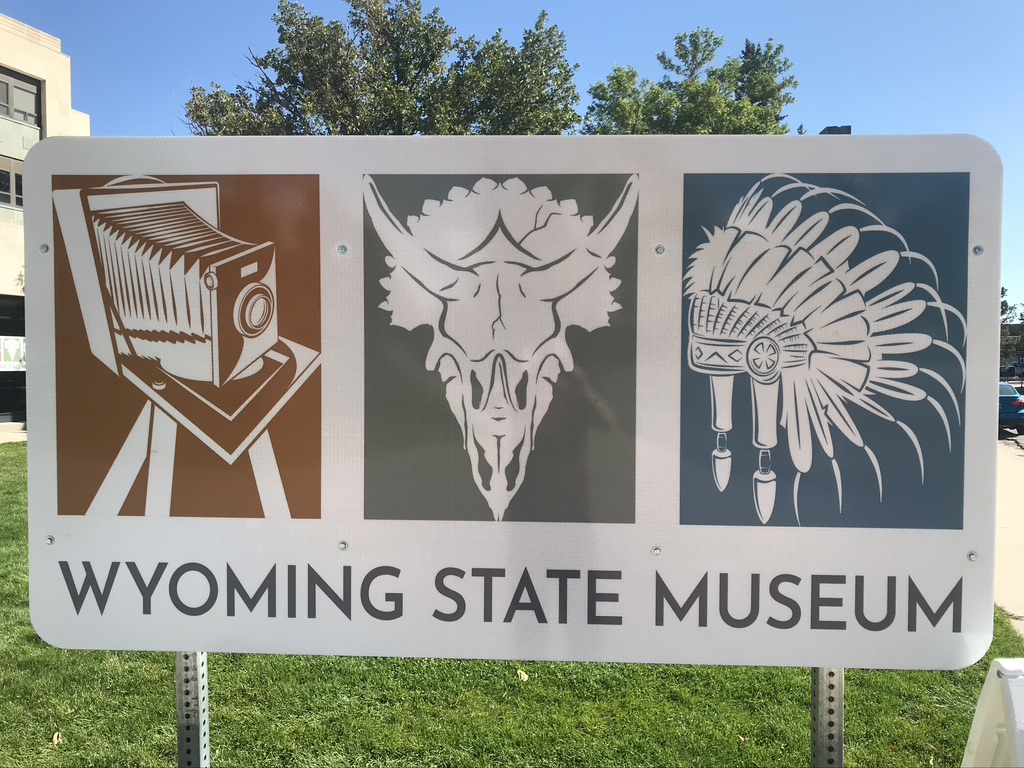
A Fun-Filled Afternoon in Cheyenne, Wyoming

Our afternoon in Cheyenne, Wyoming started at the Wyoming State Museum, and then finished up with a walk around town hunting for cowboy boot sculptures.
Did you know that Wyoming has America’s first national park, national forest, and national monument?
Yellowstone National Park was the first National Park and opened in 1872. As a way to cater to tourism in the area, the Northern Pacific Railroad financed certain amenities such as wagons for transportation and sightseeing.
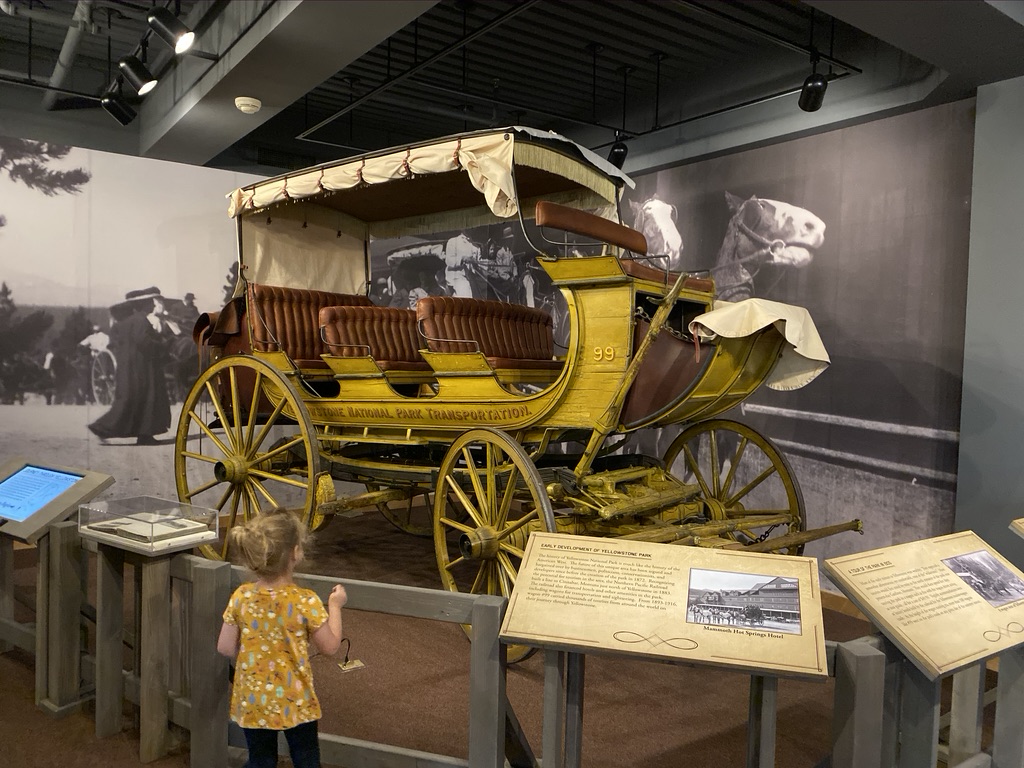
The Wyoming prairie makes up 20% of the state and is busy with wildlife. There are several varieties of wildlife on display including prairie dogs, grouse, pronghorn, jackrabbit, coyote and rattlesnake.
I was amazed to learn that there are almost as many pronghorns as people in Wyoming. Pronghorns can run up to 60 miles per hour and they migrate approximately 300 miles round trip throughout Wyoming. Only caribou has a longer migration route in the Western United States.
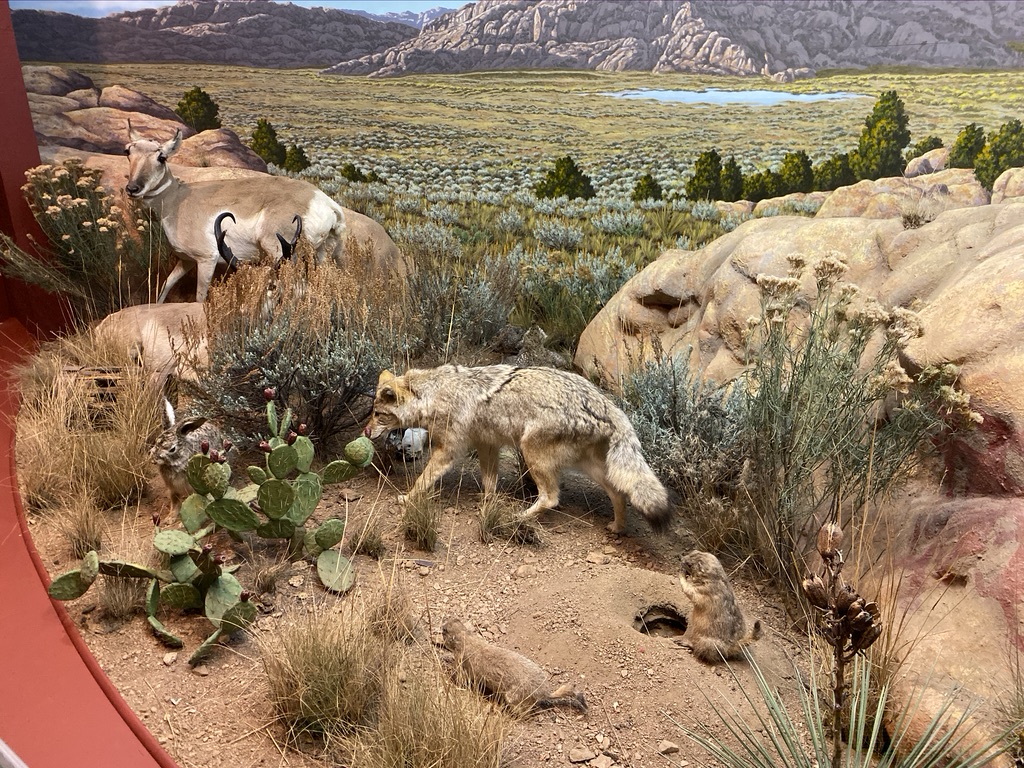
Fur trappers were one of the first European groups to explore Wyoming. Trapping is now regulated by the state and requires a license. You can see a bearskin coat from the late 1880s on display as well as a wolf pelt killed by a rancher near Laramie around 1900.
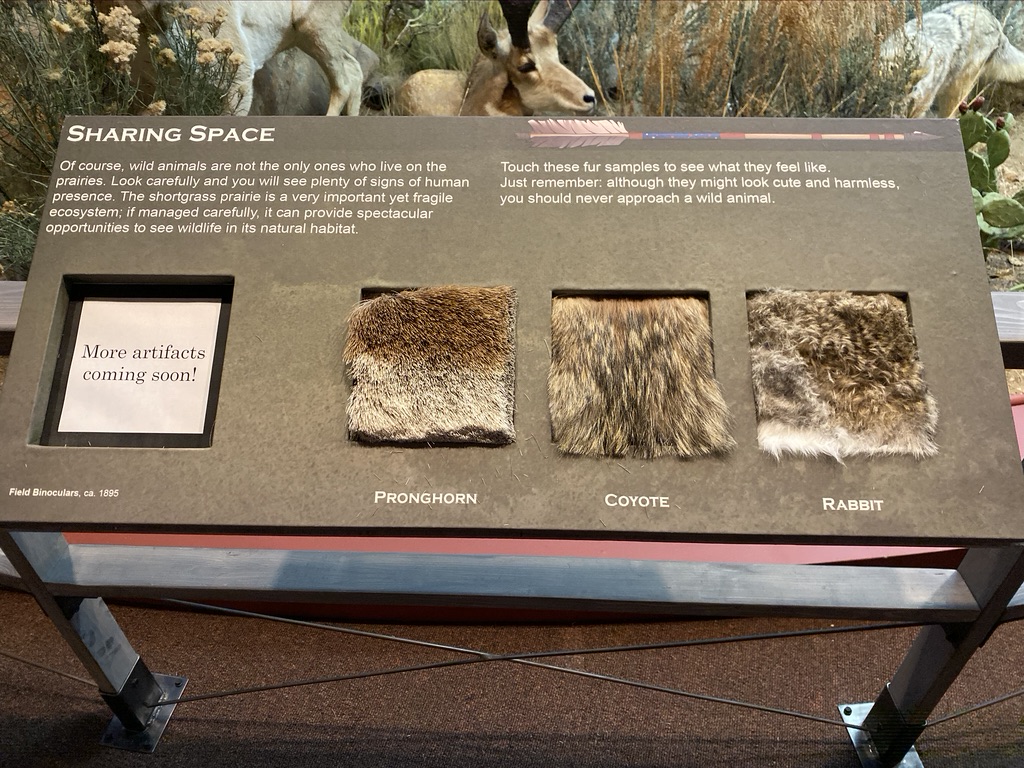
Bison can be found in Wyoming and are very large and bulky, averaging 5-6.5 feet at the shoulder and up to 2000 pounds, yet are quite speedy and can run up to 35 miles per hour. Grizzly bears and wolves are no match for bison.
Bison were very important to Native Americans. They used all parts of the bison for food, tools, supplies, etc. Native American tribes would follow the bison herds and by the late 1800s they were almost hunted to extinction due to European explorers joining in the hunt. By the 1890s less than 100 bison were left in the wild due. Through efforts started by Teddy Roosevelt in 1905, we now have approximately 500,000 bison in North America.
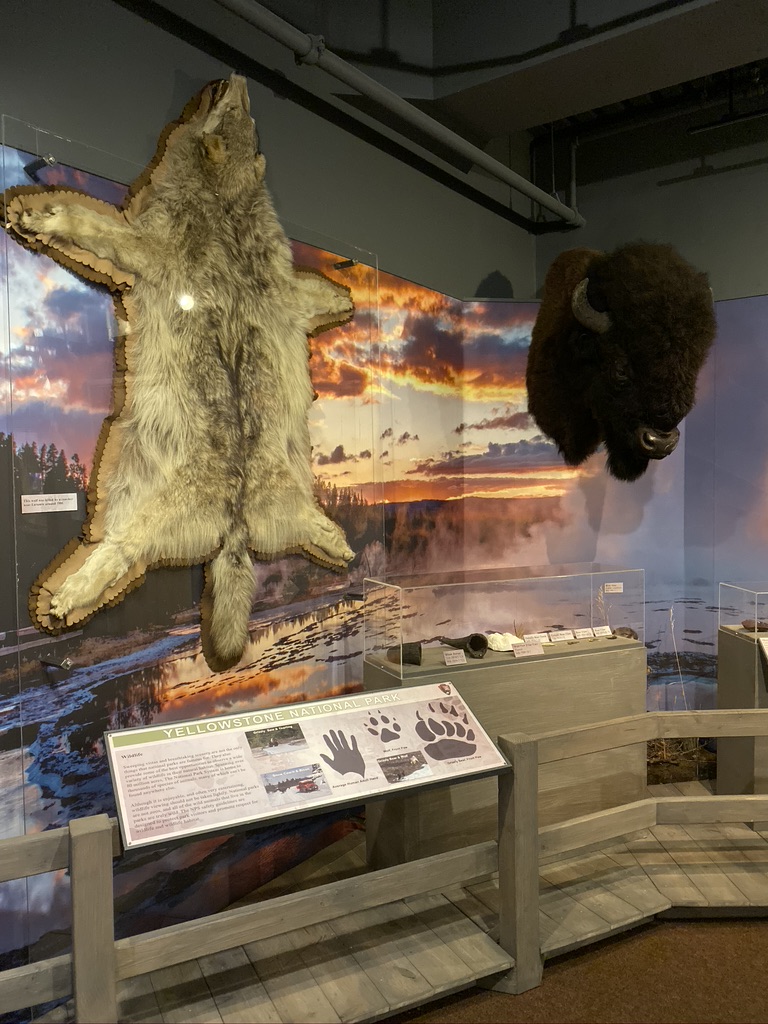
In 1884 the first sheep wagon was built in Wyoming so that shepherds could live in the wagon and easily follow their sheep.
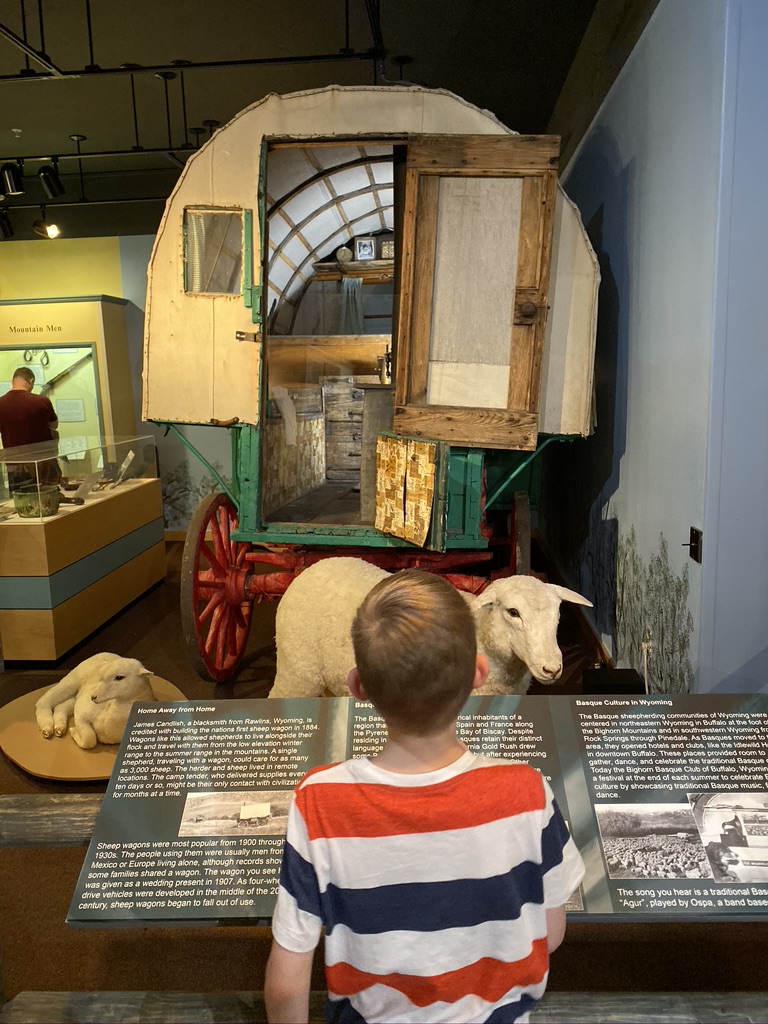
Cullan’s favorite part of the Wyoming State Museum was the Japanese friendship doll. In 1926-27 a missionary lived in Japan and saw how important dolls were to Japanese culture. He arranged for 12,000+ American blue-eyed dolls to be sent to Japan. Japan wanted to return the favor so they arranged for their best doll makers to make 58 dolls in kimonos made of silk. The dolls were then sent to libraries and museums around the United States.
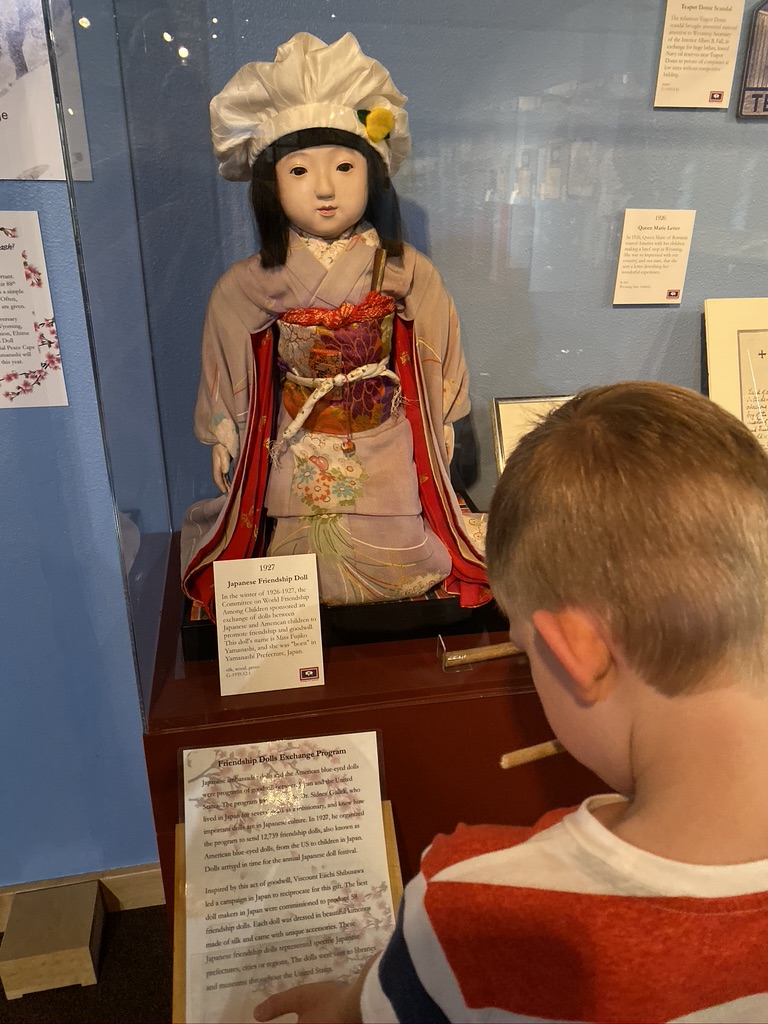
Lots of dinosaur bones and fossils have been found in Wyoming and there were even fossil discovery competitions in the 1800s. The kids enjoyed competing in their own fossil discovery competition.
When we entered the museum there was a photograph of an item in the museum that you were to try and find. If you found it you would get a prize. The tricky part was that the photograph on display was actually a part of a larger photograph that was zoomed in, so it made it pretty hard to figure out what item you were looking for. Right away the kids guessed they were looking for a skull, but it took them a while to find the right one.
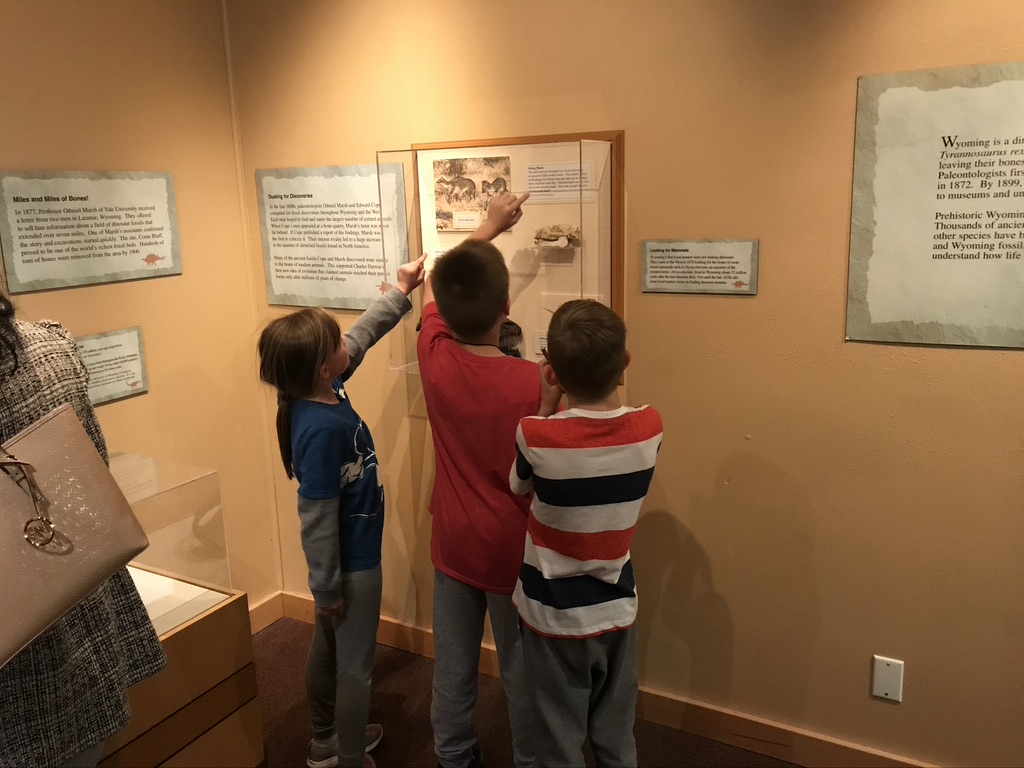
Rob enjoys woodworking and antique furniture, so he found Thomas C. Molesworth’s furniture exhibit to be interesting. The pieces were made with hand-peeled fir logs and he built furniture for the governor’s mansion, the Rockefeller ranch, and Dwight D. Eisenhower’s home in Pennsylvania.
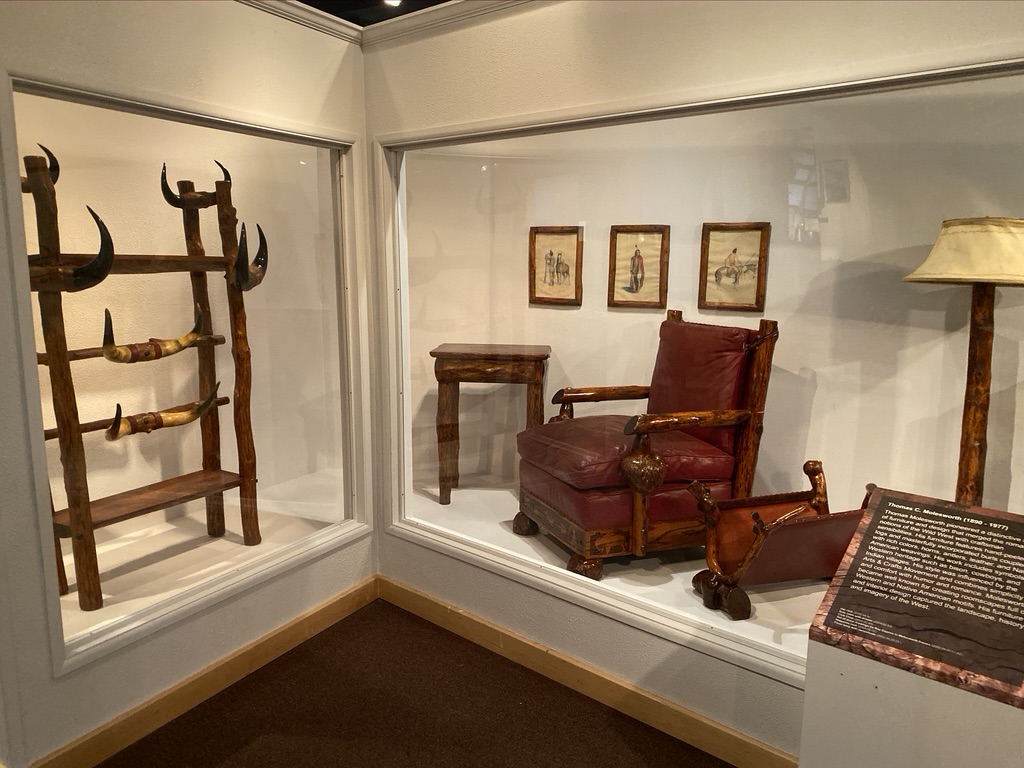
Throughout the museum there is a large collection of Native American artifacts including various hunting tools and a tally stick with notches indicating the number of kills made by the owner.
There is a Native American game called Hoop and Pole on display. Kids would learn hunting and weaponry skills by throwing arrows or darts at small moving hoops.
The girl’s favorite area was the kid’s area. There were lots of opportunities for hands-on exploring, including an outdoor campsite and a sand table showing different elevations with different colors. It was an area with activities for both Micah (8) and Hadassah (3) to enjoy.
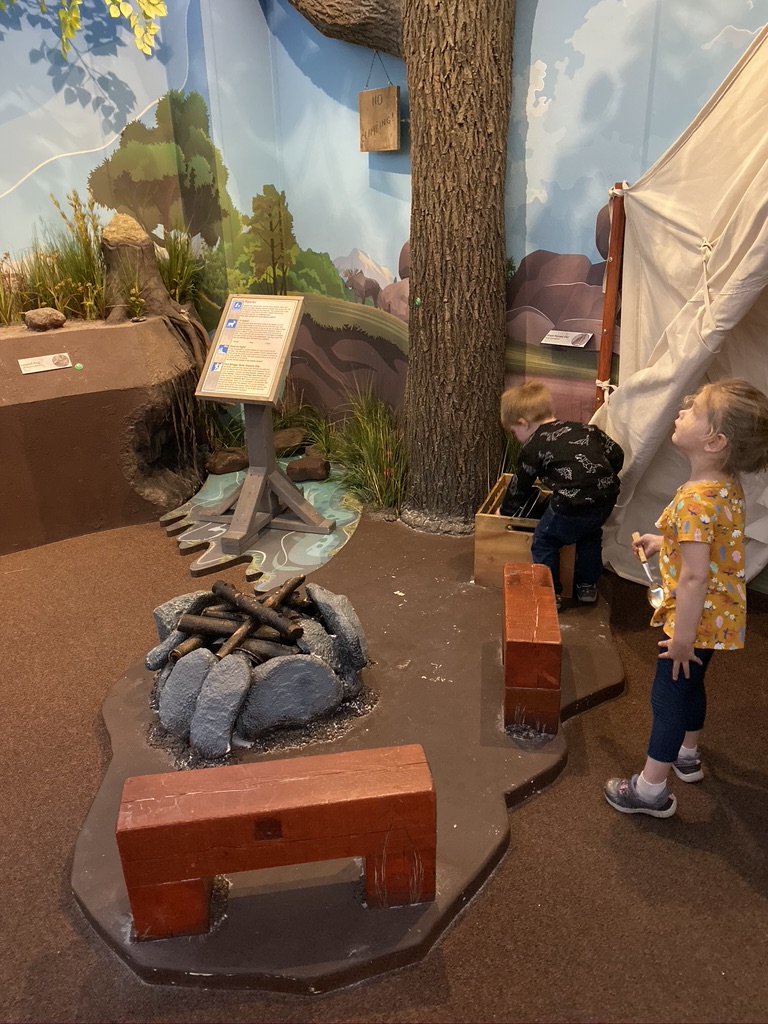
After spending a few hours at the Wyoming State Museum we were ready to start our hunt for boots. Lucky for us there’s one right outside the museum, so we didn’t have to go far to spot our first one.
These boots are really cool and are part of the “These Boots are Made for Talking” project, which raised almost $100,000 for the Cheyenne Depot Museum. They are each 8 feet tall and hand-painted. You can pick up a map and go on a hunt to find 25 of them throughout the downtown Cheyenne area.
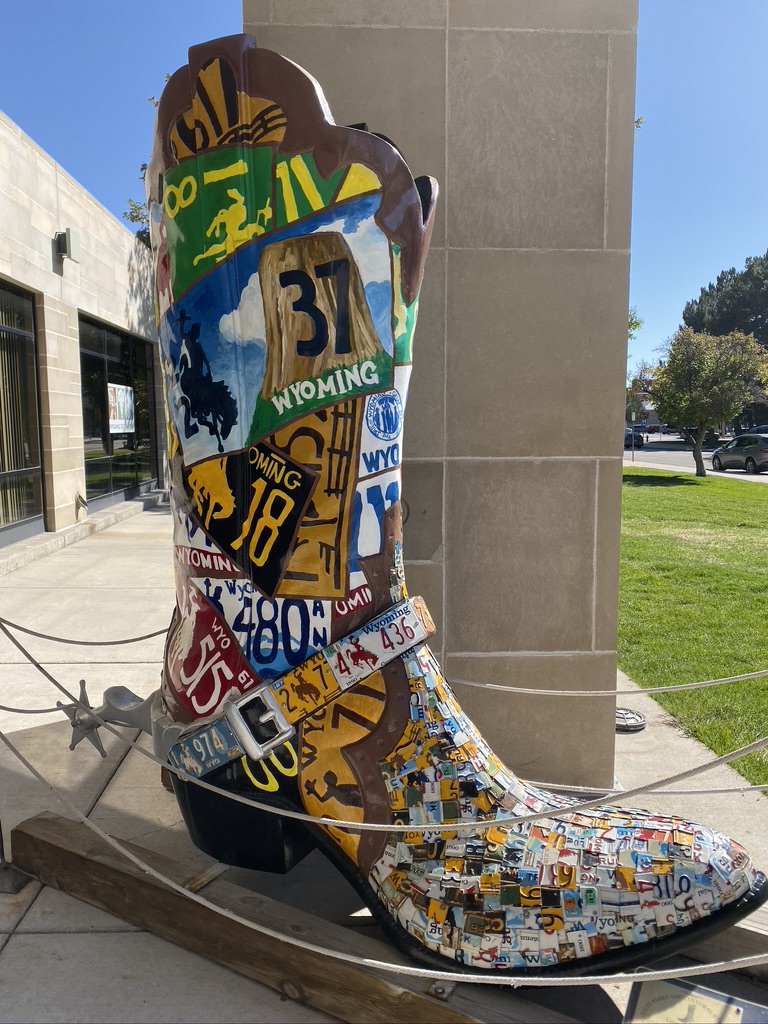
As you find each boot you can call a number and enter the corresponding boot number in order to hear the artist tell you the answer to the project theme – “if this boot could talk, what story would it tell?”
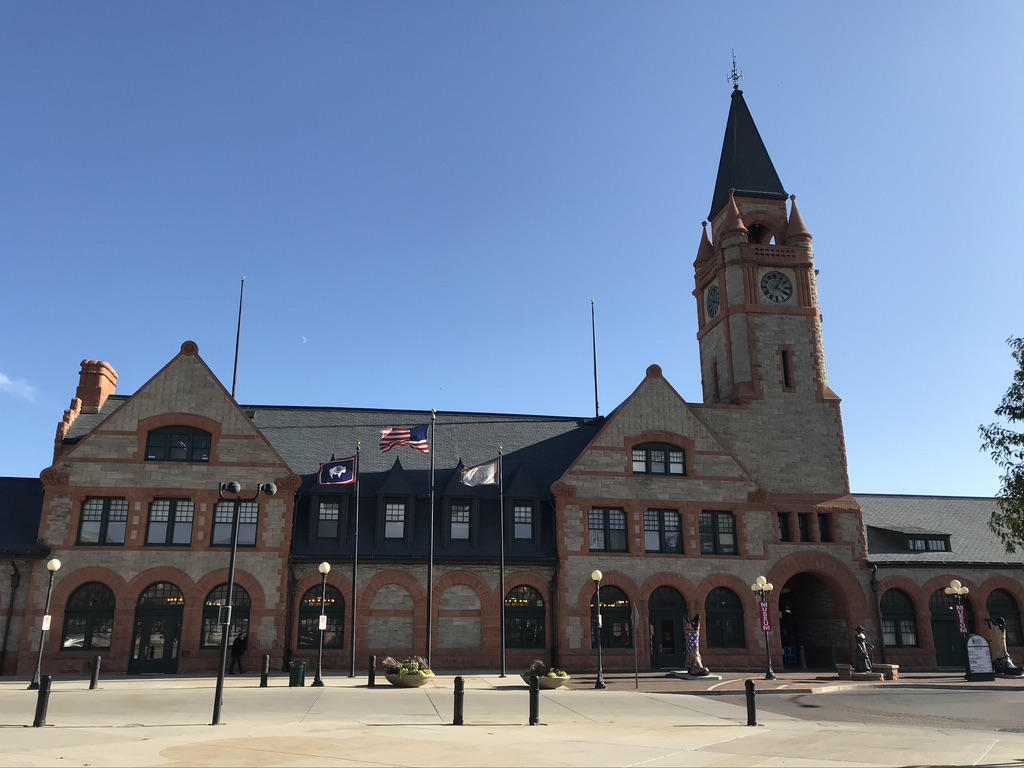
The boot outside the Wyoming State Museum is called “Licensed to Boot.” It was created by the Carey Junior High Art Club to highlight the changes in Wyoming license plates over the years. The top part is hand-painted while the bottom showcases pieces of actual license plates.
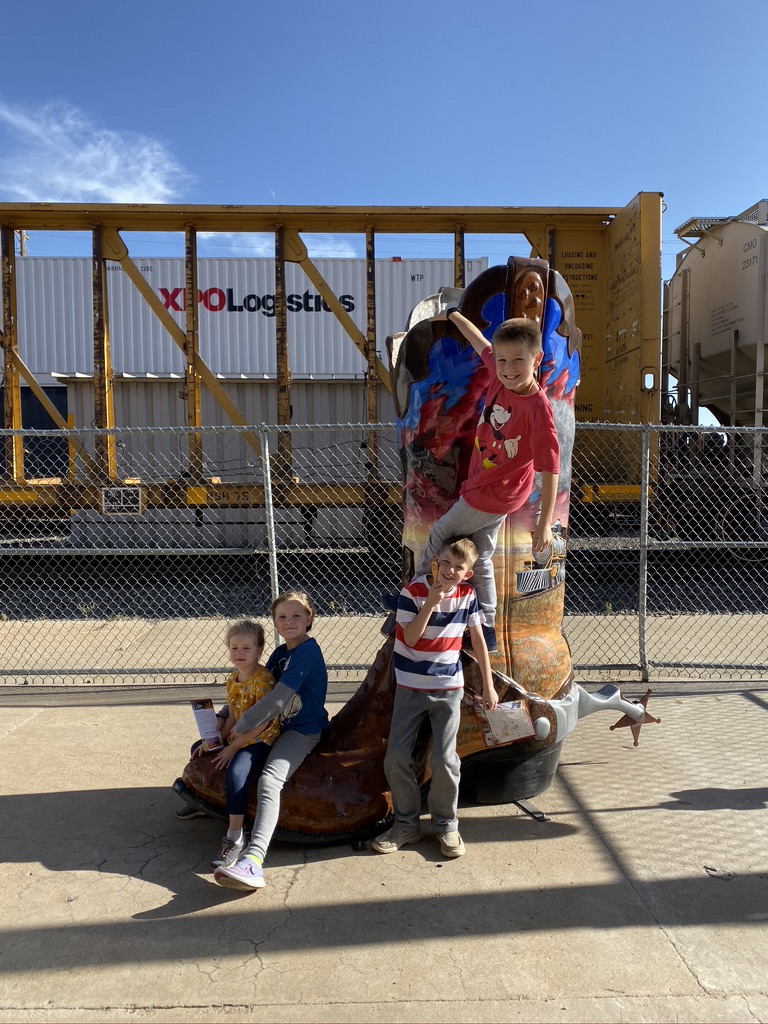
Behind the Cheyenne Depot Museum is the boot titled “Memories of the Old West.” The artist, Cody Hamil, is a 5th generation descendant of a Wyoming pioneer ranching family. He chose to depict the history of Cheyenne by painting a wagon trail that wraps around the boot and turns into the rails of the railroad which started the city of Cheyenne.
We didn’t have time to find all of the boots, but we had fun learning about the ones we found.
After wrapping up a fun-filled day in Cheyenne we started the 4 1/2 hour drive to Keystone, South Dakota. Next stop on our trip – Mount Rushmore!
For another look at our visit to Cheyenne check out our YouTube video below. You can also read about Day 1 of our trip and our visit to Red Rocks Park and Amphitheater and Casa Bonita, and Day 2 of our trip to Colorado Springs and our stops at the Garden of the Gods, the Manitou Cliff Dwellings Museum, the Manitou Springs Penny Arcade, the Colorado Springs Pioneers Museum, and Magic Town. You can also go back and read about Day 3 at the Western Museum of Mining and Industry, the Money Museum, the Colorado State Capitol, and the Molly Brown House Museum. Day 4 started with a stop at the Southeast Wyoming Welcome Center and a drive down Happy Jack Road to Curt Gowdy State Park before stopping at the Wyoming State Museum. This trip is the first trip of our “50 States Before Graduation Challenge” series.
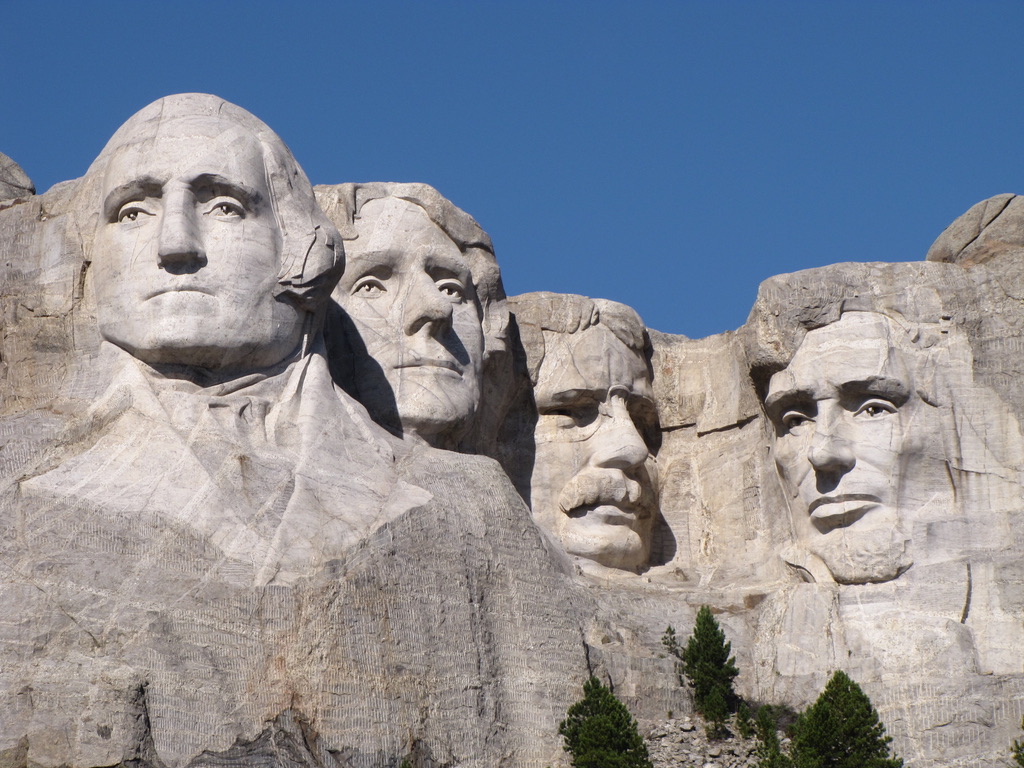
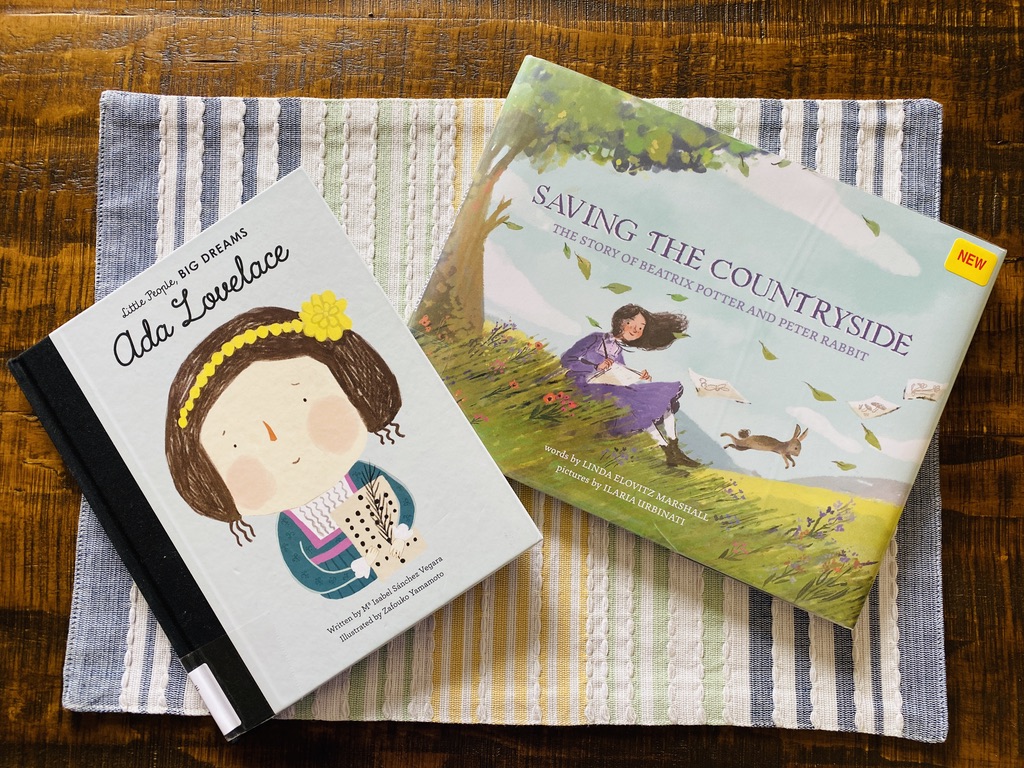
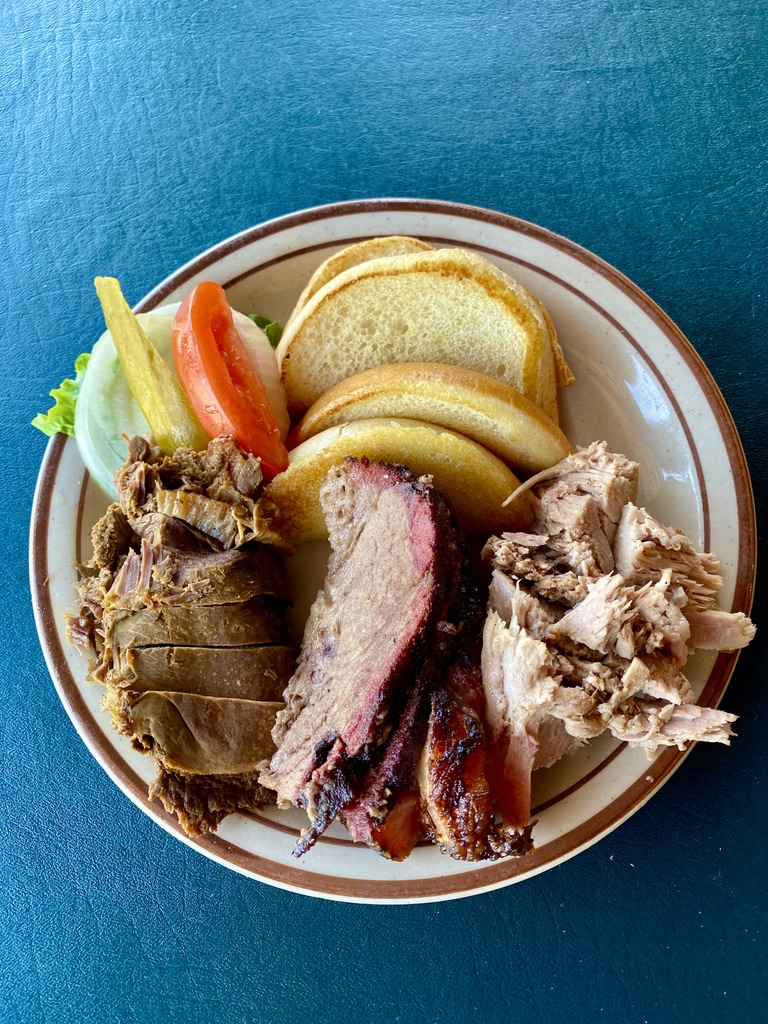
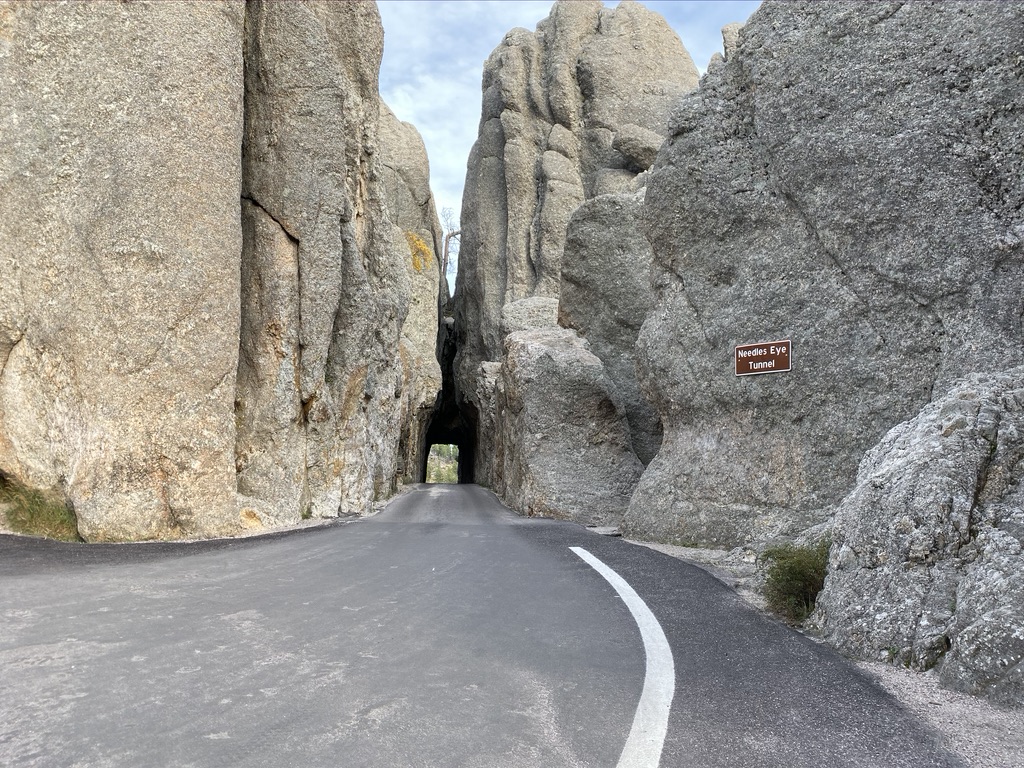
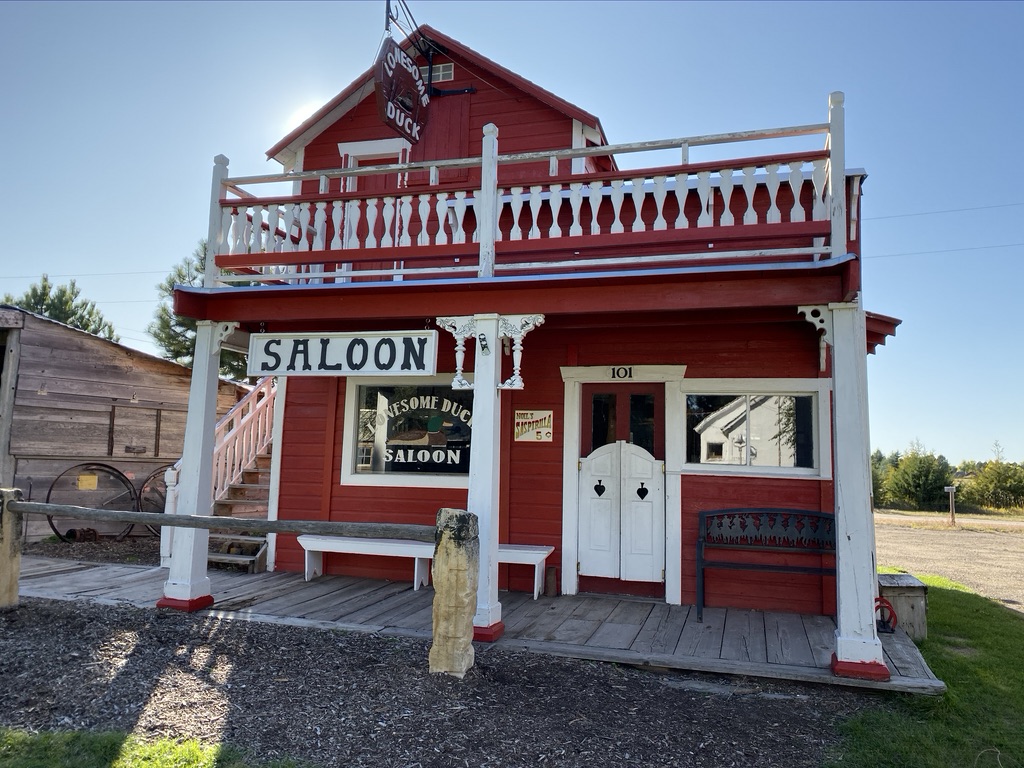
42 Comments
Alison
Such cool history to be found at the Wyoming State Museum – and your boot hunt looks like tons of fun too!
Sara W
We learned a lot during our visit.
Carey
Cheyenne looks like a great family vacation destination. I love seeing everything the museum had to offer.
Sara W
Our family really enjoyed our day in Cheyenne. There were other things we wanted to see too, but some of them were already closed for the season, and others we just ran out of time!
Pam
Looks like a great museum. And I love the hunt for boots – that’s such a fun idea and a great way to see a lot of the area.
Sara W
It gave the kids an incentive to keep walking – they wanted to find all the boots!
Stacey Billingsley
I’d love to explore Cheyenne! I’ve only been to Wyoming once, and that was just for a few hours at Devils Tower. We hope to get back one day, though. I’d love to check out the Wyoming State Musem. I love places like that.
Sara W
I wanted to go to Devils Tower but it was a little too far out of our way this trip. Maybe next time.
Lisa Manderino
Fun, I want to look for boots! We were just in Wyoming!
Sara W
Micah was really good at spotting the boots across the street, which made it a lot easier on the rest of us.
Leeanne
First, I love the cowboy boots, super fun. Secondly, I agree with Cullan that the Japanese doll was amazing. I love the idea of sending dolls between the two countries, I’m just not sure why the decision to only send blue-eyed dolls. America is a melting pot and not everyone has blue eyes.
Sara W
Good point, America is definitely more diverse than just blue-eyed individuals. I’m not sure why they only sent blue-eyed dolls.
Tricia Snow
Wyoming is on my RV bucket list. I am saving this for when we get there! Thanks!
Sara W
Wyoming would be a great place for an RV trip.
J casey
Ive heard so many great things about Yellowstone! Hopefully I’ll be able to cross it off my list some day!
Sara W
We hope to visit Yellowstone sometime too.
melissa
That boot hunt would be super cool to do! The museum looks interesting, as well. What a fun way to spend an afternoon!
Sara W
I was very impressed with the Wyoming State Museum. So much neat history about Wyoming that I never learned in school.
Faith @ ForMommiesByMommy
It does look like a fun place to visit! Thanks for sharing the photos!
Sara W
We had a great time.
Amy
I love following your adventures and learning more about places in America – some of which I haven’t even heard of!
Sara W
Thank you. We enjoy finding hidden gems to visit and explore.
Chantelle
The boots are so cool!
Sara W
We thought they were pretty neat too
Mamie
This looks so interesting to visit.
Sara W
I’m glad we decided to stop in Cheyenne. It was a fun day.
Cindy Mailhot
That boot is awesome! Looks like a great place for kids.
Sara W
We really enjoyed the boot hunt. Especially since you could call and listen to the story behind each boot.
Missy
What time of year do you recommend visiting to avoid crowds?
Sara W
We were there the first week of October and everything was perfect. Weather wasn’t too cold yet, most things were still open, and there were no crowds at all. The last two weeks of September might’ve been better as far as everything would’ve still be open, but I’m not sure what the crowds would’ve been like. I know summers (mild weather) and winters (skiing/winter sports) are very popular and are usually crowded.
Cindy
I’ve never been to Wyoming. I’d love to visit. Cheyenne looks like a fun area to explore.
Sara W
We had so much fun exploring the southeastern part of Wyoming. We can’t wait to go back and visit Yellowstone!
Eva Keller
We have a few places on our bucket list in Wyoming that we’re hoping to hit soon. We’re hoping to do a Yellowstone and Mt Rushmore road trip and do everything around those areas.
Sara W
Mount Rushmore will be a great stop. We haven’t been to Yellowstone yet, but are hoping to head there in the next few years.
Shirley
This article makes me want to pack my bags and visit Wyoming! I’ve always loved natural museums such as this.
Sara W
Each state has such a unique history. You should pack up and go!
kmf
I’m all about history and I’ve never been to Wyoming…so this sounds like my kind of place!
Sara W
We really enjoyed visiting the southeastern part, and we’re looking forward to going back to visit Yellowstone someday.
Barbara
We really enjoyed Wyoming when we were traveling through to Yellowstone! So vast!
Sara W
Yes, another state that has such a wide variety of great things to see/do.
heather J jandrue
I need to get out to this part of the country. It looks beautiful. I want to see all the cowboy boots!
Sara W
They’re beautiful works of art!